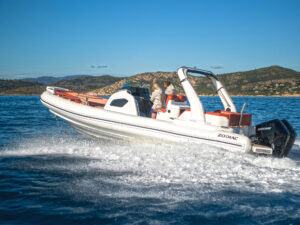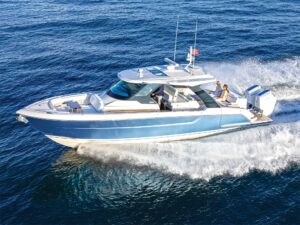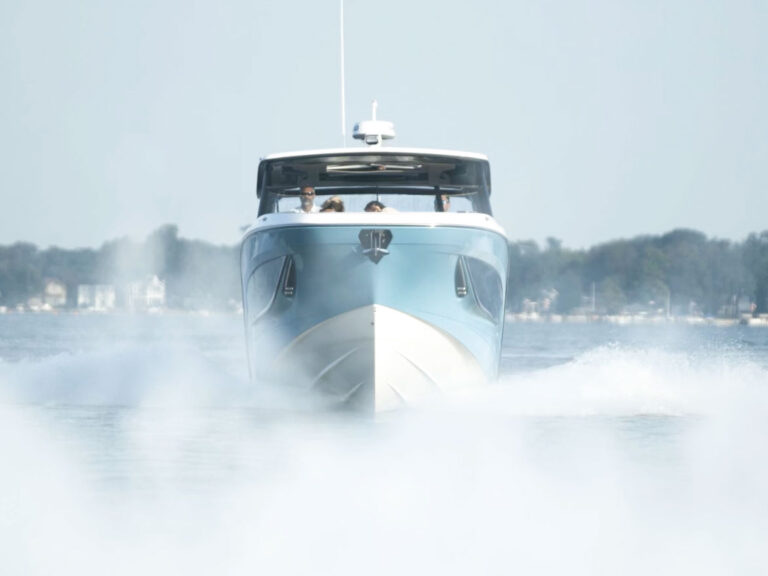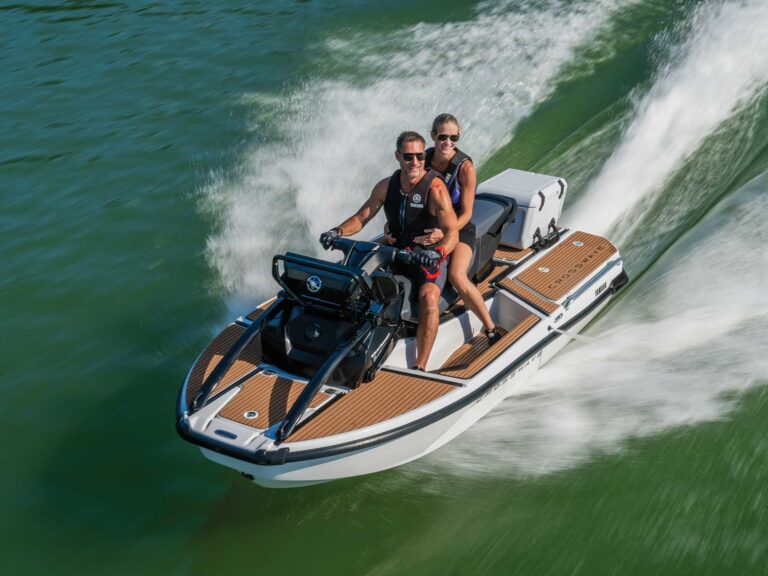Plenty of people beach their boats. I am not one of them. Sand (as in sandpaper) is abrasive. It will scratch gelcoat, possibly cause water intrusion into the fiberglass laminate, and remove antifouling coatings if your boat is painted. I know people do it all the time — I personally don’t advise it. If you must beach your boat, I suggest fitting the boat’s keel with Keelguards at the very least.
Click Here To Learn How To Repair Damaged Gelcoat
Also know that in tidal water, beaching means having to move the boat every hour or so, lest it be left high and dry — or float away! (happens!)
But here is what I do.
1. Idle into the shallowest water that you can get and still float and operate the drive.
2. Hop out and physically take the anchor ashore and plant it.
3. Take a second anchor out astern and secure it to keep the boat from blowing sideways across the beach. Depending upon the depth of water, you may need to drop the stern anchor on approach, leaving the end of the line in the boat slack and untied. Then take and secure the bow anchor and pull back on the stern anchor until the boat is secure on the two lines.
4. To leave, remove bow anchor. Then untie stern anchor and bring its line forward–either to the helm if you are alone, or have a crew member bring it to the bow. This way you can back out/turn around without running over the stern anchor line (you may be able to just pull the boat out to the stern anchor and retrieve it by pulling on the stern anchor line; or you may be able to wade out to the actual stern anchor and just pull it and pick it up–all depends on wind, current and water depth astern).
Tips for Rafting-Up With Other Boats
Learn How To Make A Simple Outhaul (Clothesline Mooring)
Bonus: Transducer Tips!
As to the depth finder. The transducer is mounted aft, so it reads the depth from there. Trace the wire from the sounder to the transducer to find the exact location in your boat, or check your manual. It can’t be mounted forward because it needs to be on part of the boat that is always in the water.
The finder measures the depth from its mounting location to the bottom of the lake. So if the boat draws two feet and the sounder says three feet, you are actually in 5 feet of water.
Many finders/sounders have a “keel offset” function that allows you to adjust the display to compensate for the draft of the boat at the transducer location. Personally I just do the math in my head. But check the manual and it should provide directions if your depth sounder is so-equipped.









